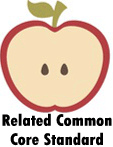What are the Basic Punctuation Rules?
What do you think will happen if there were no punctuation marks will the sentences still make sense will you know how to read whats written how long can you keep reading before finally starting getting annoyed at the absence of punctuations marks
If that was difficult to read and comprehend, it is clear that we rely on punctuations to get our point across and understand what others are trying to communicate.
English grammar has 14 punctuation marks, and each sentence requires at least one of them to make sense. Each of these punctuations follows a certain set of rules, and it is essential to know them to write comprehensive sentences. Here, we will describe some of the rules so you can use them correctly and write better:
Commas ( , ):
Commas are used to separate three or more ideas, words, phrases, or parts of sentences.
Example: Alice bought makeup, shoes, bags, and some books from the market.
Quotation Marks ( "…" )
Quotation marks represent speech and enclose the exact words of a person. Periods, commas, question marks, and exclamation marks are placed inside quotation marks.
Example: Mum shouted, "Do not hit your brother."
Question Mark ( ? )
An inquisitive statement ends with a question mark.
Example: Where do you think you're going?
Exclamation Point ( ! )
An exclamatory sentence is followed by an exclamation point.
Example: I can't believe I got so lucky!
Hyphens ( - )
Hyphens are used to join word units (prefixes, suffixes, and letters) to words or form compound words.
Example: Results-oriented, fifty-three, soon-to-be
Colons ( : )
Colons are written after independent clauses and call attention to the information written after them.
Example: The project manager had to perform the following functions: mentoring, budgeting, and reporting.
Semicolons ( ; )
Semicolons are used to join two complete sentences with the same idea. Semicolons help avoid confusion between items in lists where there are already commas
Example: Little George was nervous; it was his first day at school.
Parenthesis ( )
Parentheses show related but less important elements in a sentence.
Example: He went backpacking across Europe (Rome, France, Italy) last year.
Square Brackets ( [ ] )
Square brackets are used to highlight words added by someone other than the original writer or speaker. They clarify the situation in certain sentences.
Example: He [the neighbor] is the actual culprit.
Apostrophes ( ' )
Apostrophes are used to show possession. They are also used in contractions to mark the missing letter or letters.
Examples:
- I'm, you're, they're
- Alison's book, Timmy's car
Dashes ( - )
Not to be confused with a hyphen, a dash is used to connect a group of words or emphasize a group of words in a sentence.
Example: She knew she had everything under control-until her toxic sister arrived.
Slash ( / )
A slash is used to indicate fractions or separate days, months, and years. It is sometimes used in place of or. It is also used to indicate a line break in a poem or song.
Examples:
- Mary had a little lamb/ little lamb, little lamb/ Mary had a little lamb/ whose fleece was white as snow.
- 26/12/2021
It is important to choose the right punctuation and use it correctly. We hope the rules above will help you make the right choice and improve your writing structure.
